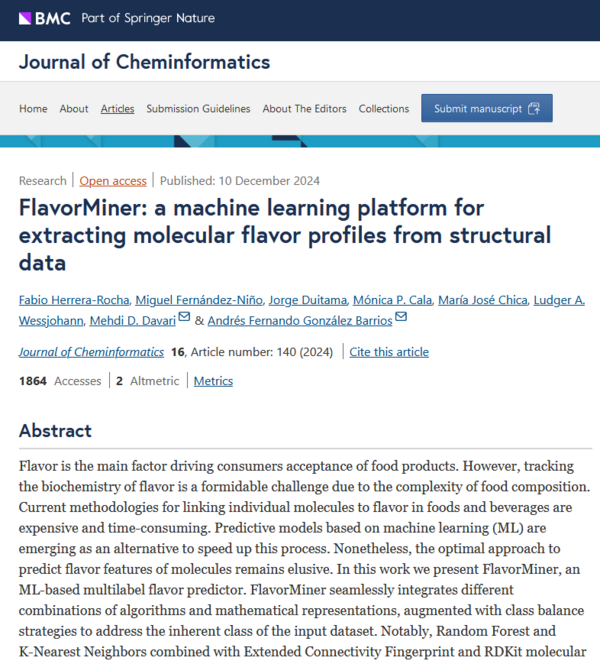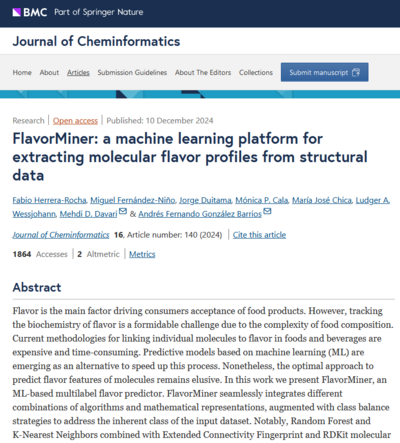Flavor is predictable: With FlavorMiner.
FlavorMiner is the name of the tool recently developed by IPB chemists and partners from Colombia. Based on machine learning, the program can predict the most important taste characteristics of food constituents with a high degree of accuracy using the molecular structure of the ingredients. FlavorMiner recognizes not only sweet, sour and bitter notes, but also fruity, floral, off-flavor and, for the first time, nutty flavor components in a type of food. Predicting flavor is currently still a time-consuming and expensive undertaking, either requiring the sensory skills of tasting experts or the processing power of high end computers.
For FlavorMiner, the Halle scientists analyzed and combined existing databases and prediction models and optimized the predictive power of the program by adding further molecular properties such as size, polarity, electronic structure, stability and the absorption and distribution in the flavor-bearing fats. The scientists conclude that their results provide a solid basis for future studies to decode the chemistry of flavor properties. FlavorMiner can be applied to identify flavor molecules identified from any food product and relies on a diverse training dataset that includes more than 934 different food constituents.
By using robust algorithmic combinations paired with mathematical visualizations, FlavorMiner achieves a high prediction performance. With an ROC-AUC value of 0.88 - i.e. an 88% probability of correct predictions - the FlavorMiner algorithm performs similarly well to other bitterness and sweetness predictors, but outperforms previous predictions of floral or fruity notes. FlavorMiner is also one of the very few ML prediction programs that are freely accessible at https://github.com/ipb-halle/FlavorMiner.
For the proof of concept, Cocoa was put to the test. By analyzing the databases of cocoa ingredients, FlavorMiner was able to prove its predictive power for the taste of this fermented product. Previous studies had identified around 200 compounds that are formed during the fermentation, drying and roasting of fine flavor cocoa beans. However, flavor profiles were available for less than half of these compounds. After analyzing the data set with FlavorMiner, 92 percent of the investigated cocoa metabolites could be assigned a known flavor profile. The newly assigned flavor profiles included twelve floral, eight fruity and four compounds with unknown but subtle flavor attributes that may have a positive impact on the overall product. In addition, two substances with off-flavors were found, as well as 27 unknown and potentially sweet compounds.
These predictions represent an important step forward in bridging the gap between changes in the metabolic fingerprint of cocoa during processing and flavor quality. The IPB has been working with Casa Luker - one of Colombia's largest and oldest cocoa and chocolate producers - for several years. The aim is to jointly develop an improved, stable standard process for the production of fine flavor chocolate.



